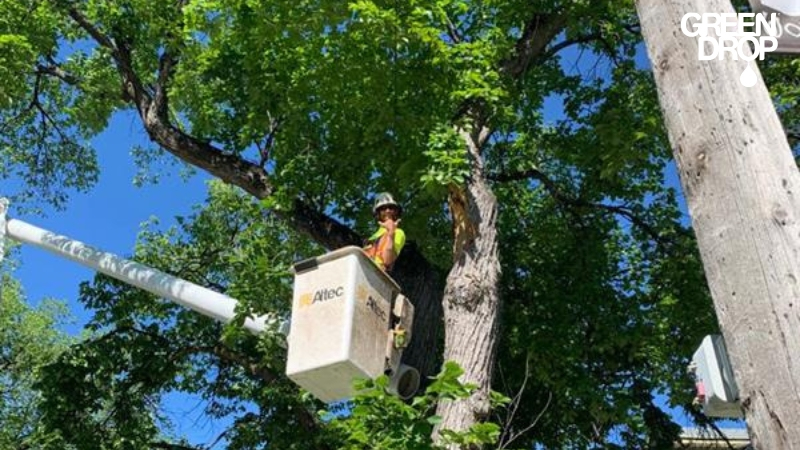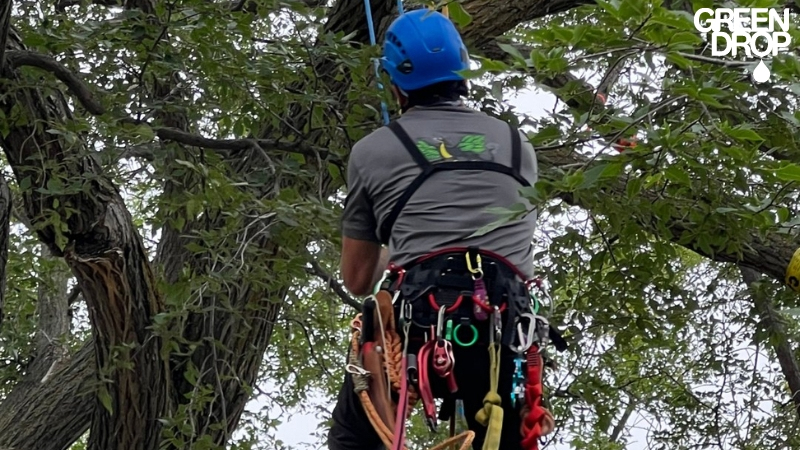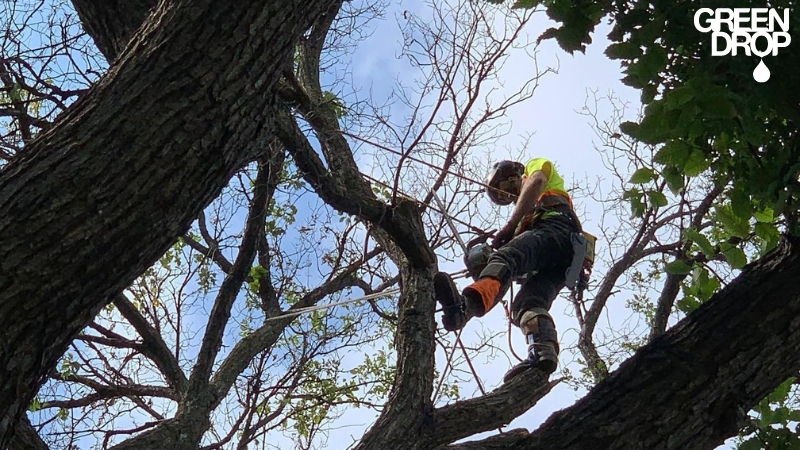Pruning Season is About To Begin – Everything You Need to Know About Pruning Trees in Calgary
Reading time: 6 minutesAs the leaves start to blush with the hues of fall in Calgary, it's a gentle nudge that it's time to grab those pruning shears! You want to give them the spa treatment they deserve before they settle in for the long winter nap.
You have questions. Good thing we have the answers.

Start of Pruning Season
October isn't just about Halloween decorations and leaf-peeping; it’s also prime time to kick-start your fall tree care routine. And that includes tree pruning.
During this period, most trees begin to shed their leaves, giving you a clearer view of the bark and branches. This makes it easier to identify branches that need to go—be it for health, safety, or aesthetics. Moreover, with the trees entering dormancy, cutting back branches now minimizes the stress inflicted on them. You’re basically making surgical incisions while the patient is asleep.
Pruning at this time also gives your trees a boost for the next growth cycle. By removing the dead or diseased wood, you're essentially tidying up the tree’s vascular system. This means that nutrients are directed to the healthy parts, so come March, your tree can “spring” to life.

Trees That Need Pruning in Fall
Here’s a list:
- Pruning elm trees in the fall is a smart move to prevent Dutch elm disease. The disease is spread by bark beetles that are attracted to freshly cut wood and are less active outside of their April to September peak season. By pruning during Calgary's fall months, you significantly reduce the risk of these trees attracting beetles that could spread the disease.
- Like elms, oak trees are best pruned when it's cooler to prevent the spread of oak wilt, carried by beetles that are more active in warm months. Fall pruning helps ensure that the cuts have time to heal before the beetles become active again in the spring, safeguarding these stately trees from the devastating disease.
- Apple and crab-apple trees also benefit considerably from fall pruning. Removing dead or diseased branches in the fall helps prevent the spread of common fungal diseases such as apple scab and fire blight. It also improves air circulation, which is crucial to keep diseases at bay.
- Pruning birch and maple trees in the fall can help avoid "bleeding," which is when these trees lose sap from cuts made in late winter or spring. This sap loss can weaken the trees but is minimized if pruning is done after the leaves drop and before the ground freezes.
- Lastly, known for its delicate foliage and strong disease resistance, the honey locust can also benefit from fall pruning. Pruning helps manage its shape and size, making it more resilient to the heavy snows and harsh winds typical of Calgary winters.
Common Mistakes When Pruning Your Trees
As we head into optimal fall pruning season, keep in mind these common pruning mistakes:
- Over-pruning. One of the most common myths and resultant missteps is removing too much of the tree at once. It's important to follow the general rule of thumb: never remove more than 25% of a tree's crown in one season. Over-pruning can stress the tree, leading to stunted growth and increased vulnerability to diseases and pests.
- Incorrect Timing. Although fall is ideal for many trees, pruning at the wrong time can be detrimental. For instance, if you prune elm or oak trees in the spring, you’re increasing the risk of diseased trees. Pruning flowering trees in the fall can remove buds that would bloom in spring.
- Improper Cuts. Cuts should be made just outside the branch collar (the point where a branch meets the trunk or another branch). Cutting too close to the trunk can remove the branch collar, causing wounds that heal poorly and increase susceptibility to disease. Conversely, leaving too long of a stub can also hinder proper healing.
- Using Dull or Dirty Tools. Dull pruning tools can cause jagged cuts that are difficult for the tree to heal, while dirty tools can spread disease from one tree to another. Always use sharp, clean tools to make clean cuts that heal quickly and cleanly.
- Ignoring Tree Structure. A well-pruned tree should maintain a balanced, natural appearance. Avoid excessive cutting at the tree’s top or outer regions, which can lead to a weakened structure. Focus instead on removing dead, diseased, or crossing branches that can cause long-term health problems.
- Ignoring Weather Conditions. Pruning during adverse weather conditions, such as high winds, rain, or extreme cold, can be harmful. Such conditions can complicate the pruning process and increase the risk of injury to both the pruner and the tree. It's best to choose a clear and dry day for pruning activities.
- Applying wound sealant. Applying wound paint and sealant is unnecessary and not beneficial for the tree. While the paint or sealant may block some pests and diseases from entering, it can trap moisture on the wound's surface, creating a favourable environment for pests and diseases to proliferate.
Not All Trees Need to be Pruned in Fall or Winter
Even though fall is usually the best time to prune most trees in Calgary, sometimes your leafy friends might need a little off-season trim.
If a heavy storm has left broken branches in spring, don’t wait until fall; get those hazards out of the way to keep both your tree and passers-by safe. And let’s talk about those lovely bloomers like lilacs and forsythias that you’ll want to prune right after flowering in spring. This keeps their show-stopping performance on schedule for next year.
Also, if you spot any signs of disease during the warmer months, it’s crucial to prune right away to prevent further spread. Just a few careful cuts could save your tree’s life and keep your garden looking sharp.
Why You Need Professional Pruning
Diving into DIY pruning is tempting, especially if you consider yourself a bit of a green thumb. But, when it comes to tree diseases and ensuring the health and longevity of your trees, calling in the professionals is the safe bet.
Our ISA-certified arborists aren’t just tree trimmers, they’re tree whisperers with a deep understanding of tree anatomy and ecosystem dynamics. We can spot issues that aren’t obvious to the untrained eye—from hidden diseases to structural weaknesses. Our expertise is crucial, especially for large or complex trees where incorrect pruning can lead to serious problems like stunted growth or even tree death.
Moreover, professional pruning goes beyond mere cutting. Our arborists are there to preserve the tree’s health, enhance its natural shape, and boost its growth potential. And let's not forget safety – managing towering branches yourself can be hazardous.

Trim the Hassle with Green Drop’s Pruning Services
Ready for pruning season? We are too! Leave the shears to the pros and ensure your trees get the expert care they deserve! Green Drop’s certified arborists are standing by across Calgary, Edmonton, Red Deer, Regina, Saskatoon, and Winnipeg, ready to tailor their skills to your trees’ needs.
From strategic trimming to comprehensive pruning, we cover all bases to enhance your landscape’s health and aesthetics. Don’t just wing it – get a free estimate and see how professional pruning can transform your trees this season.

